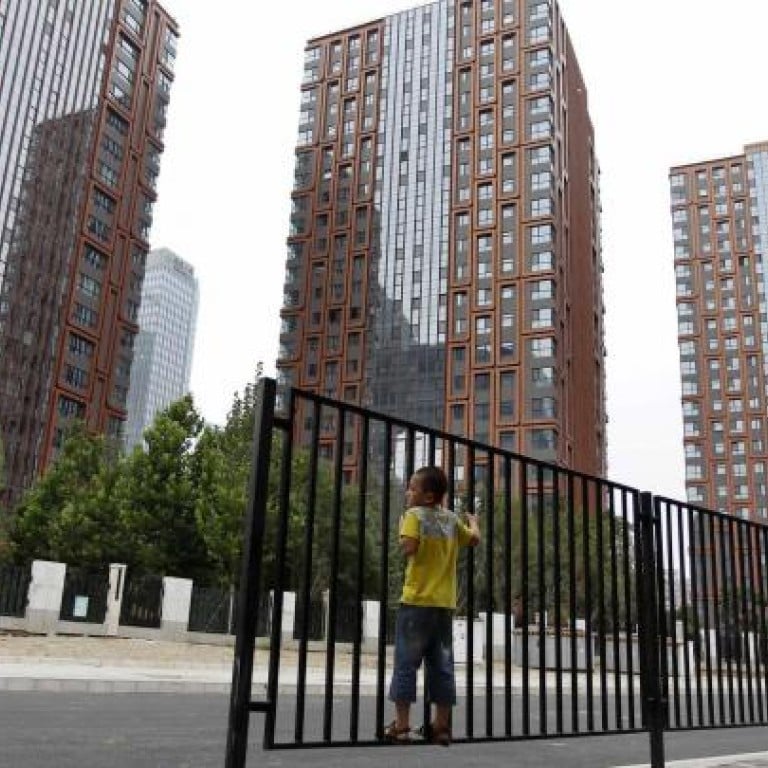
Cash-for-flats model is superior to Home Ownership Scheme
Mainland will soon start giving low-income earners money towards buying a home. It's a model Hong Kong would do well to follow
The mainland currently provides subsidised rental housing as well as more upmarket housing for sale at subsidised prices - equivalent to the Home Ownership Scheme (HOS) in Hong Kong.
For almost a decade, Hong Kong provided subsidised public housing for rent only, but it recently revived the HOS in response to vocal demand for assisted home ownership.
Meanwhile, things move along on the mainland. Officials have indicated that, progressively from the end of the 12th Five Year Plan (2011-15), social security for housing will no longer be mainly by way of subsidised housing, but via cash subsidies. The current wave of public-housing construction will be transitional, to build up enough suitable housing stock for the introduction of monetary subsidies.
Thereafter, it can be inferred, the government will stop building subsidised housing. Instead it will sell more land-use rights to private developers, and pay income supplements to qualifying tenants or buyers who rent or buy homes at market rates. The former public-rental housing will also be available for sale.
The scheme will enable low-income families to buy their own homes - assets that will appreciate in value because of their land element, and constitute valuable savings' nest eggs for a rapidly ageing population.
China is fast becoming urbanised. In land-scarce cities, home values rise with nominal gross domestic product over time, outpacing inflation. Yet wage differentials are widening and housing is becoming less and less affordable for lower-income families.
Hong Kong has had a similar experience. Its gross domestic product last year was eight times its 1981 GDP, versus only a 6.2 times growth in median household income - capturing the effect of a lag in income for the less skilled. Home prices, however, were up 7.5 times over the intervening period, close to the increase in GDP.
If a housing subsidy takes the form of cash to be used for buying a home, then rising property prices will narrow, instead of widen, the rich-poor gap. The government will no longer have to fight property price rises - apart from ensuring an adequate supply of land.
Consider Singapore. It started out with a public rental-housing programme like Hong Kong's. But former prime minister Lee Kuan Yew soon realised that home ownership was the key to social stability.
So citizens were given the option to buy, and today of the 80 per cent of Singaporeans that live in public housing, 95 per cent own their homes. Lee was right. Although Singapore's income disparity is large, its society is stable.
Singapore's experience provides more lessons. Low-income earners who buy their own homes with public subsidies pose no excessive financial risk to mortgage lenders or to themselves.
Singapore, in effect, enables low-income families to participate in a broadened HOS.
But this "subsidised housing" approach to broadening home ownership is too inefficient. Mainly, resources are not used where most needed. Applicants only have to meet the income-ceiling requirement once, at the time of purchase - irrespective of income increases later.
Full benefits go to all recipients, even those with incomes of just HK$1, say, below the income ceiling. Also, Singapore offers premium flats to better-paid applicants, giving a subsidy to the less needy.
The cash-subsidies approach is better. It can be seen as extending comprehensive social-security assistance to housing, but can more aptly be characterised as a negative income tax. The subsidies inherent in public-rental housing are paid out as income supplements, to meet people's needs as measured by how much individual family incomes fall short of affording guaranteed living standards.
Compared with Singapore's approach, this will save over half the resources, which can be used to raise standards and widen eligibility.
When home prices are rising rapidly, the guaranteed physical-housing standard would become unaffordable to progressively higher income families, who would then become eligible for the income supplements. Furthermore, to provide incentive for self-advancement, that standard can be on a sliding scale, rising with the recipient's earnings.
For example, for every extra HK$100 in earnings, the guaranteed living standard would rise by HK$50, so the supplement would be cut by only HK$50, not the full HK$100. Thus, as his earnings rise, the standard the recipient enjoys keeps rising, even though the income supplement he receives keeps falling.
Far from introducing a welfare state, such a system would enhance and strengthen the mainland's - or Hong Kong's - market economy.
James Lee writes as an independent commentator. The full version of this article is on www.hongkongbetter.com

